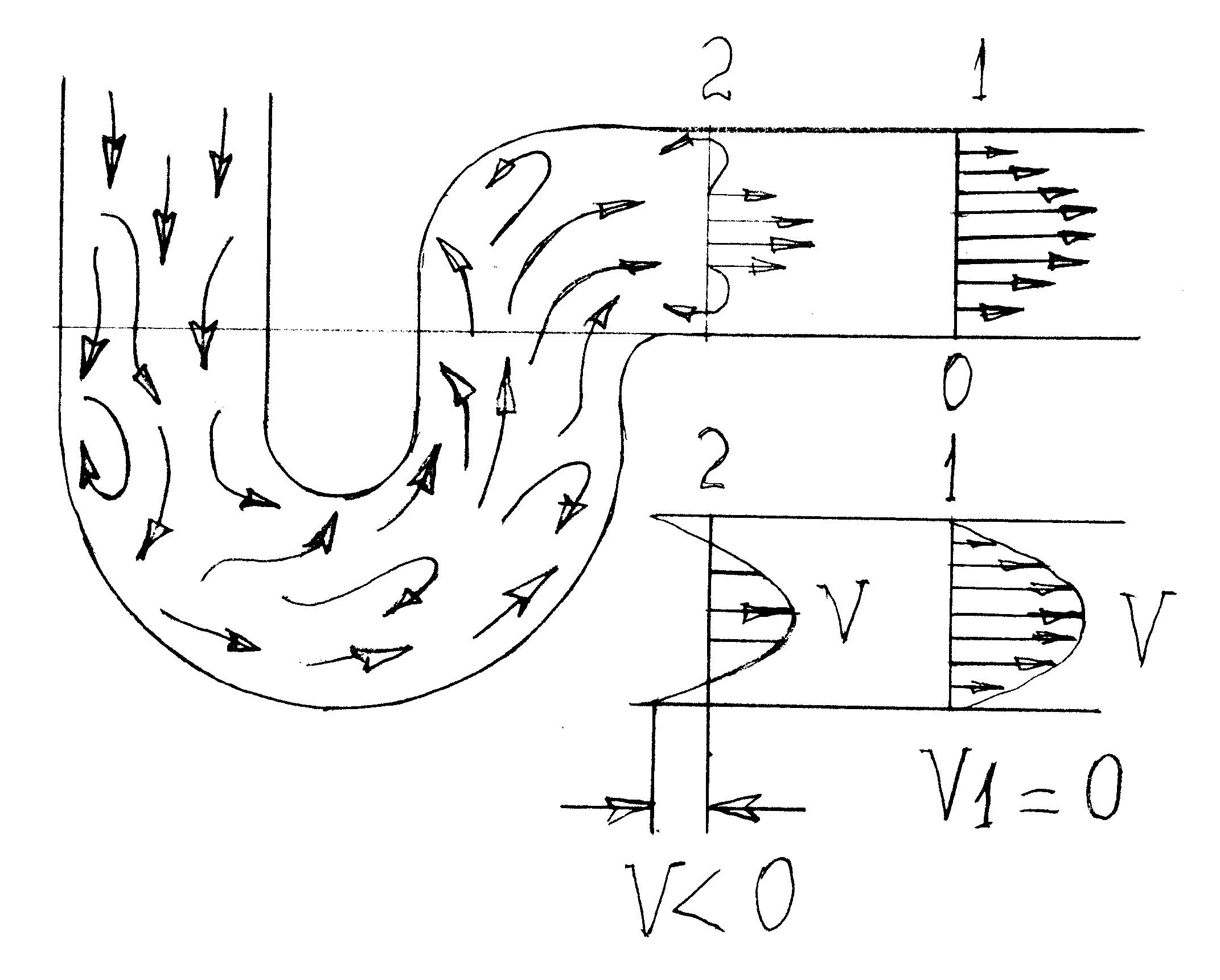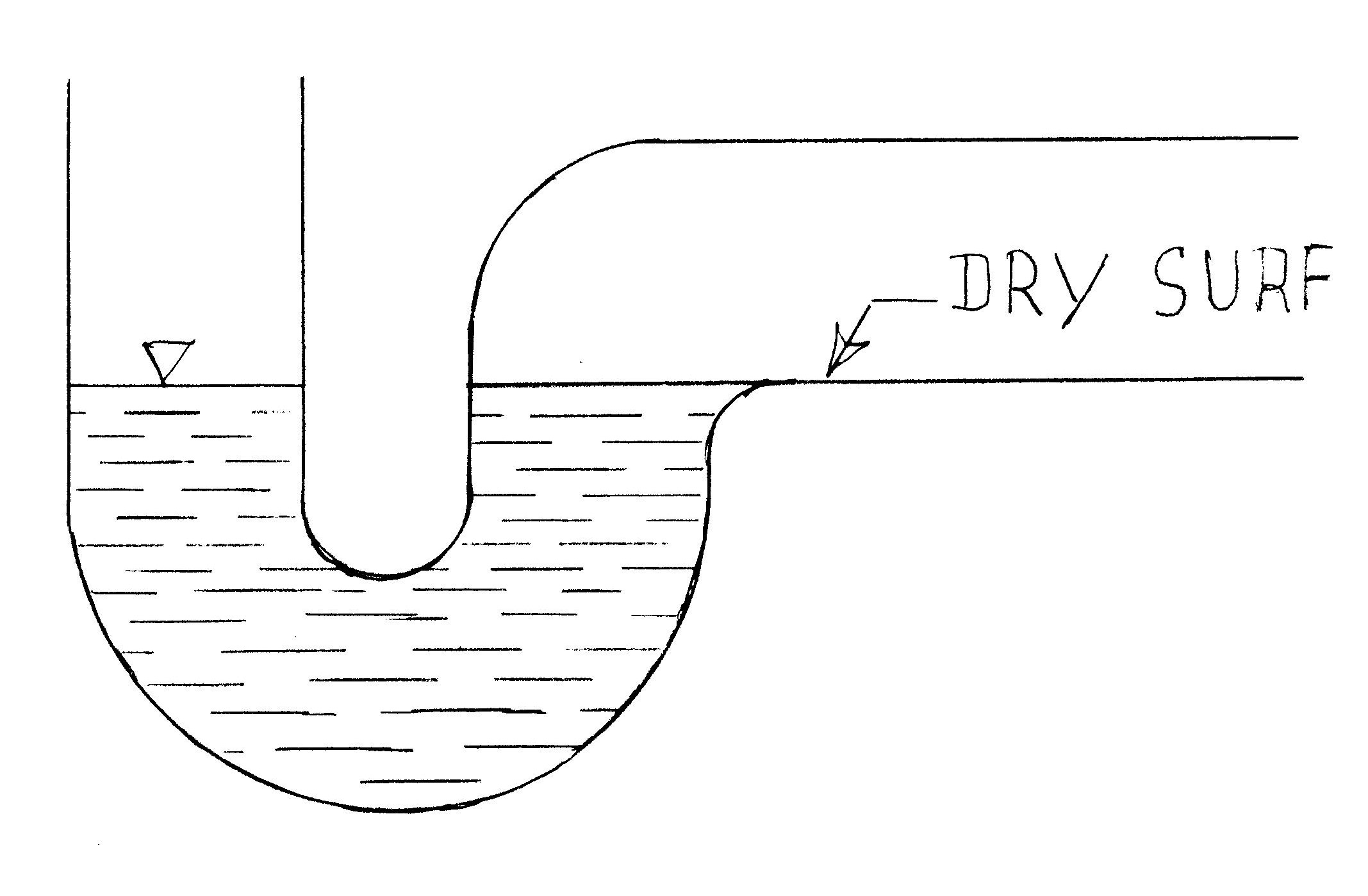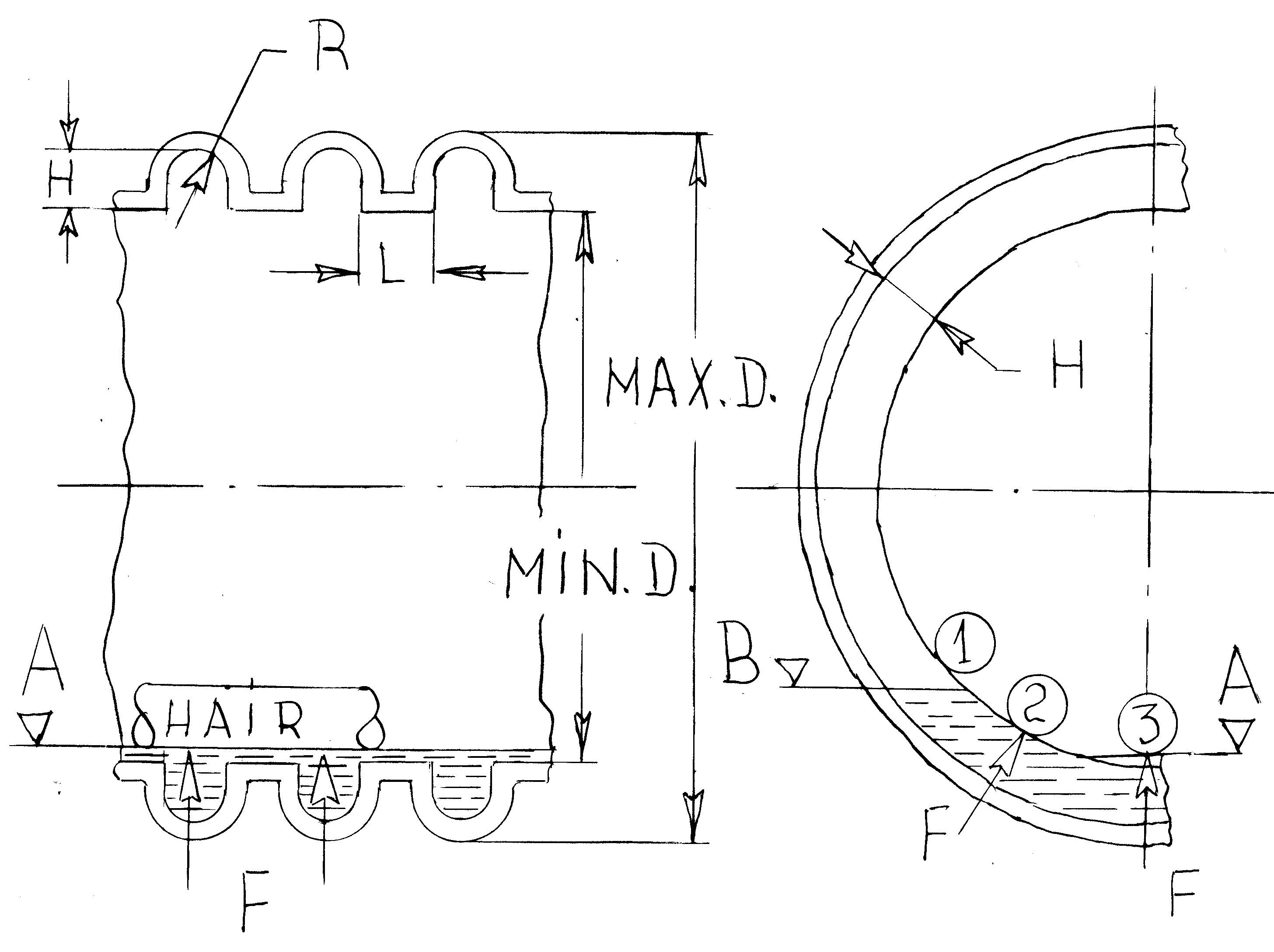Self Cleaning Flex P-Trap
The regular plumbing p-trap (p-trap with smooth walls) is not self-cleaning, because it is not designed to be self-cleaning. When you don’t use the sink, all the particles from the water or hair will stick on the horizontal arm, where it will build up and strangulate the p-trap. Heavy materials will sink in to the bottom of the U shape, and the p-trap will become clogged. The Flex P-trap is the world’s first self-cleaning P-trap to use capillaries wall with a unique dual-action. First, it reduces the contact surface, second it lubricates the contact surfaces of the particles (hair) with the wall.
The capillaries wall transforms the hydrophobic surface (smooth) of the p-trap in a hydrophilic surface. This means that when water hits the surface of the capillaries wall, the water lifts up in capillaries channels and the water’s molecules attract each other forming a sheet over all ribs at some level as in capillaries. The water’s sheet over all the ribs will reduce the friction between dirt (hair) and the ribs, meaning it will lubricate the wall.
The dirt (hair) on the surface is picked up by the water and washed off the P-trap.
The self-cleaning of the p-trap means that the particles from water will not build up inside of the p-trap surface or the p-trap will not be clogged. An example would be a water pipe from copper, which is self-cleaning when it's used for supplying the house with drinking water, but a steel galvanized pipe is not self-cleaning because inorganic particles (minerals) from the water build up inside of the steel galvanized pipe and will completely strangulate the water supply. The copper pipe used for the drain is not self-cleaning because it works with organic particles at atmospheric pressures, other conditions. If you use exterior force such as chemical force (plumbing cleaners) mechanical force (vibrations, plumbing sneak) or other kinds of forces, the plumbing p-trap is not self-cleaning.
The self-cleaning flex p-trap works similarly with the self-cleaning glass from commercial buildings. The glass is coated with a thin film of titanium dioxide, which reacts with sunlight to break down dirt on the glass. Then, the glass allows rain to wash away the dirt with almost no streaking because the surface coating causes the water to spread evenly across it. Since the self-cleaning glass is a two-stage process, the glass must be installed in a location that receives sunlight and rain for it to work properly.
The p-trap works in three stages:
Stage 1. The p-trap is full with water. Turbulent-flow in full p-trap. In this stage all p-traps are self-cleaning, because of the rough water flow. The water in contact with the walls flows in all directions, and lifts up the particles from the bottom of the wall. Fig.29 (point 2), video 29A
Stage 2. The p-trap is full with water in the U shape and little water in horizontal arm. Turbulent-flow in the U shape of p-trap and laminar-flow in horizontal arm. Fig.29 (point 1) In this stage all particles from the water will stop in the horizontal arm. In laminar-flow (in horizontal arm), the layers of water flow parallel, with the same speed, in the same directions and the particles from the water will sink and will stop on the surface of walls, because layers of water in contact with the walls have friction and the speed is zero. In this stage 6-2% particles will stop in the horizontal arm (see video 29B).
Stage 3. The p-trap full is with water in the U shape and dry surface on horizontal arm (Fig.30A). In this stage all p-traps with smooth walls will clog, because particles have stopped on the horizontal arm and will stick on the dry surface, and will build up and strangulate the p-trap. The p-trap with capillaries wall in the horizontal arm will not be clogged, because the capillaries pipe will hold all the time some water and particles from water will sink but will not stick on the wall. If the water is evaporated from p-trap when you turn on the faucet, first it will fill up the capillaries pipe in the horizontal arm, and will lift up the particles and hair which are stuck on top of the ribs (the space between two capillaries). If the space between two capillaries from the horizontal arm is too big and the radius of capillaries is to small, the jet of water from the capillaries pipe will not lift up the hair from the top of the ribs. If the size of capillaries is too big, the water level in the capillaries pipe will decrease and the self-cleaning will decrease too. Because of this, the size of the capillaries pipe and the space between capillaries are very important (see video 30A and video 29A)
 |
 |
| Fig.29 (video 29A, video 29B) | Fig.30A (video 30A) |
Self-cleaning of p-trap from hairs
The bathroom sink is many times clogged with hair, and hair works like capillares pipes and can socket all the water from the U shale of p-trap, leaving the drain without the water seal. Because of this, it is time to pay attention to the p-trap. The hair from the horizontal arm of the Flex p-trap can have 3 positions, as you can see in Fig.30B:
Pos.1 The hair on the side wall (on the dry surface) where it sticks
Pos.2 The hair on the wet surface where is stopped (does not stick there), and can slide down
Pos.3 The hair in the water where it can float
The p-trap with smooth walls has only pos.1 and pos.2, because it does not have capillaries pipe with water. For a little while, pos.3 will be wet and the rest of p-trap dry, and the hair can slide to the drain if it has a new wave to push it. If there is to much hair, it will stick on the side wall and will not slide to the drain. The contact of the hair with the inside surface is a continuous line, but for a p-trap with capillaries pipes it's a discontinuous line. If you have a plastic straw as in Fig.30B, when rotating counterclockwise the corrigan pipe with capillaries wall, the pos.1 will became pos.2, pos.2 will be pos.3 and the straw will rotate. For a p-trap with smooth walls, the straw will not rotate because it does not have water pos.3. will slide only. Please see video 30B and video 30A.

Fig.30B (video 30B)

